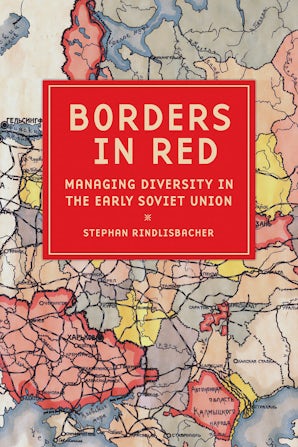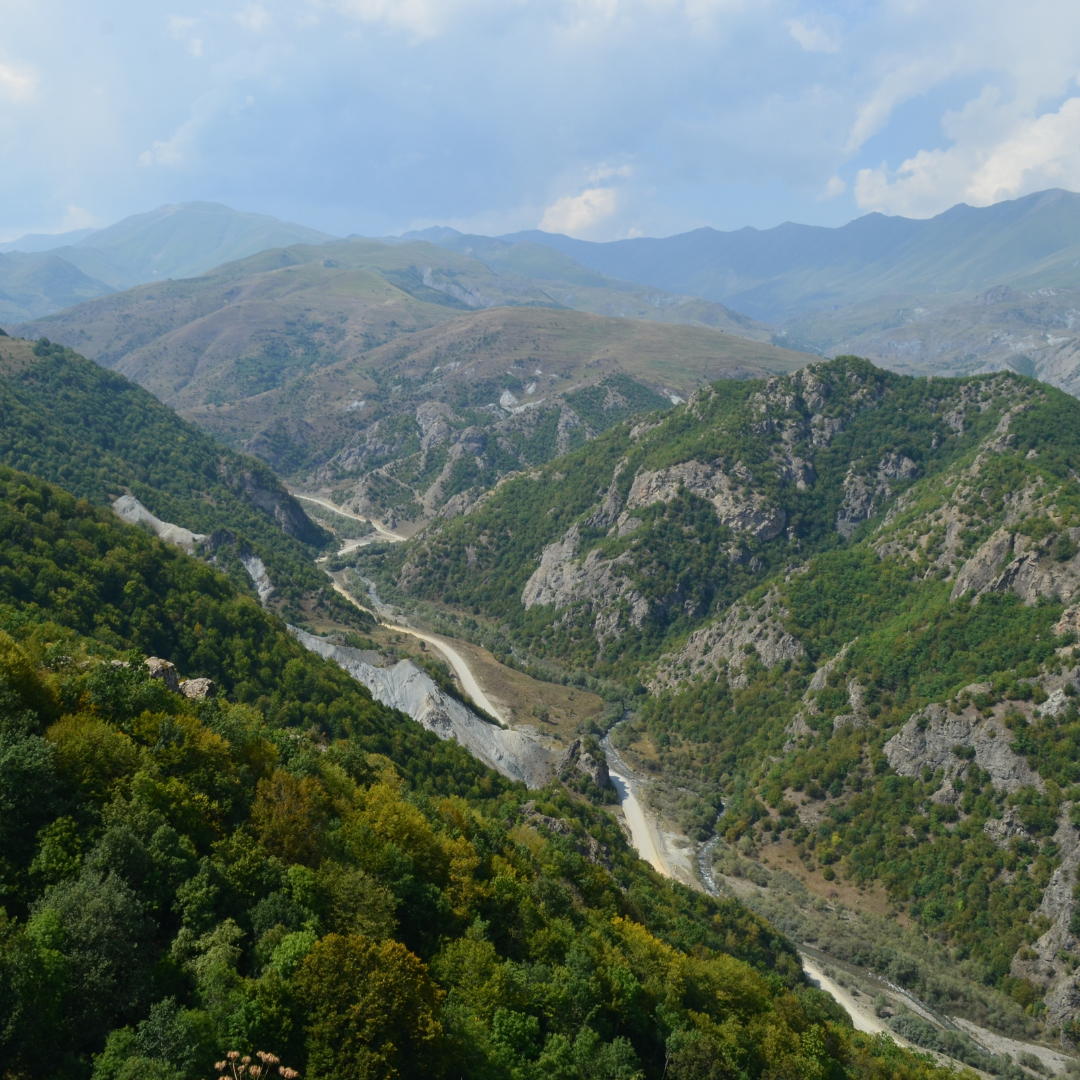The borders of diversity: Red lines in the Soviet experiment

Published by: Northern Illinois University Press

Since the dissolution of the Soviet Union in 1991, the legacy of its territorial architecture has remained central to many of the region’s most enduring political and military conflicts. From the wars in the South Caucasus and Central Asia in the 1990s to the ongoing struggles over Crimea, Donbas, and Nagorno-Karabakh, disputes over sovereignty, national culture, and historical legitimacy continue to unfold along boundaries that were never intended to serve as international borders. Originally drawn as internal administrative divisions within a socialist federation, these lines have acquired new meanings in a post-imperial, post-Soviet context. As independent states assert their territorial claims and reconfigure national narratives, the administrative logic of early Soviet border-making has come under renewed scrutiny.
It is within this broader historical and geopolitical context that Stephan Rindlisbacher’s Borders in Red: Managing Diversity in the Early Soviet Union offers particular analytical resonance. Rather than providing a direct genealogy of contemporary conflicts, the book examines how territorial and ethnic boundaries were constructed during the formative years of the Soviet state. Through detailed archival research and carefully selected regional case studies, Rindlisbacher reconstructs the institutional and ideological processes that shaped the spatial order of the USSR. He argues that national delimitation in the 1920s was not merely a symbolic gesture toward ethnic pluralism, but a tool for governing diversity and stabilizing a fragmented post-imperial landscape. Soviet officials used red paint to mark the newly drawn borders, visually reinforcing the literal and symbolic “red lines” that would later become prevalent in post-Soviet territorial conflicts. By highlighting the tensions between ideology, institutional practice, and local agency, Borders in Red deepens our understanding of how the Soviet Union managed complexity, and how its administrative architecture continues to reverberate today.
Gosplan is portrayed by Rindlisbacher as a key “actor” in determining the territorial configuration of the Soviet Union
Rindlisbacher approaches the question of borders not primarily as a matter of geography or cartography, but as a political-institutional process. He demonstrates that the formation of borders in the Soviet Union functioned as a means of transforming former imperial territories into a governable space, where ethnic distinctions were not eliminated but instead formally recognized and integrated into administrative frameworks. In contrast to earlier interpretations that treated these boundaries as temporary accommodations to national forms, Borders in Red emphasizes that it was through territorial delineation and the association of ethnicity with specific geographic areas that a new model of governance was established. Ethnic republics were not only ideological constructs but also administrative mechanisms designed to manage internal diversity.
A central finding of the book is the role played not only by the party apparatus but also by economic planning institutions, particularly the State Planning Committee (Gosplan). Often regarded solely as a body for macroeconomic regulation, Gosplan is portrayed by Rindlisbacher as a key “actor” in determining the territorial configuration of the Soviet Union. Its personnel contributed to the development of criteria for boundary decisions, which included not only ethnic composition but also transportation networks, access to natural resources, levels of industrial development, and administrative feasibility. In doing so, the author illustrates that border-making was shaped by an interplay between political priorities and economic rationale.
The book devotes specific attention to three regional case studies: Ukraine, Central Asia, and the South Caucasus. This exclusive focus on regions that later became independent states, however, leaves the vast territories of the Russian Soviet Federative Socialist Republic (RSFSR), including Siberia and the Russian Far East, largely unexamined. As a result, the internal logic of border-making within the RSFSR itself remains underexplored, despite its institutional significance in the early Soviet territorial framework. Nonetheless, within the selected cases, Rindlisbacher offers a nuanced view of how territorial decisions were shaped not only by central directives but also by regional dynamics and competing institutional logics.
borders were drawn through negotiation, lobbying, and sometimes avoidance, reflecting ideological aspirations and the gritty realities of governance.
The chapter on Ukraine examines the contested nature of border-making between the Ukrainian SSR and the Russian SFSR, highlighting how even within the Slavic “core” of the Soviet Union, territorial disputes were deeply entangled with local agency and strategic interests. While Moscow ultimately maintained control over final decisions, local actors were far from being passive. Rindlisbacher draws attention to figures such as Sergei Vvedenskii, a Gosplanexpert whose assessment of border disputes – “to satisfy one part of the population means an unsatisfactory decision for the other” – captures the contradictions of applying ethnonational logic to socially and economically integrated territories. Disputes over the Kursk region, the Donbas, and the Milove/Chertkovo zone reveal how Ukrainian officials used the language of national representation to retain control over infrastructure and resources. These were not minor disputes; they were essential to shaping the administrative structure of the Soviet Union. As Rindlisbacher shows, borders were drawn through negotiation, lobbying, and sometimes avoidance, reflecting ideological aspirations and the gritty realities of governance.
The section on Central Asia explores the 1924 national delimitation as both an act of administrative reorganization and a process of nation-building. The formation of the Uzbek, Turkmen, and Tajik SSRs reflected existing ethnic and territorial realities, but it also helped shape them. Rindlisbacher emphasizes the relationship between central institutions, such as Gosplan and the Central Asian Bureau (Sredazbiuro), and local elites who utilized Soviet discourse to advance their agendas. Key figures, such as Fayzulla Xoʻjayev (the first head of the Uzbek SSR) and Saiddan Asurov (a Tajik communist who advocated for the recognition of a distinct Tajik national group), emerge as pivotal individuals who navigated the complexities of ideological conformity and regional interests. They were not mere executors of Moscow’s vision, but rather, they were actors in a process of negotiation, contestation, and institutional invention. Thus, delimitation appears not only as a technical or ethnographic endeavor, but also as a deeply political act involving regional and local ambition and compromise.
The section on the South Caucasus focuses on the complex territorial disputes between Armenia, Azerbaijan, and Georgia. The Soviet government often opted for a policy of deliberate non-resolution in these disputes. Rindlisbacher introduces the concept of “managed ambiguity” to explain how Moscow delegated responsibility to regional institutions, such as the Caucasus Bureau (Kavbiuro) and the Transcaucasian Committee (Zakkraykom), rather than imposing settlements. Figures like Saak Ter-Gabrielian, an Armenian Bolshevik and head of the Commission on Regionalization, emerge as intermediaries who attempted to navigate the shifting demands of republican elites and central authorities. Despite the existence of formal structures for conflict resolution, local party leaders often obstructed implementation by employing delay tactics and appealing to national rights in order to resist unfavorable outcomes. The result was the institutionalization of uncertainty. In regions such as Nagorno-Karabakh, Nakhichevan, and Zangezur, borders were intentionally left blurred, setting the stage for future conflicts. As Rindlisbacher demonstrates, this was less a failure of state capacity than a calculated technique for maintaining authority in a fractious region.
The chapter on the 1954 transfer of Crimea from the Russian SFSR to the Ukrainian SSR dismantles the enduring myth of Khrushchev’s “gift” by situating the decision within established Soviet administrative routines. Rather than portraying it as an exceptional or ideologically driven gesture, Rindlisbacher traces the logic of infrastructural integration and bureaucratic pragmatism. Gosplan experts and Ukrainian administrators emphasized Crimea’s growing economic and logistical dependence on southern Ukraine, particularly in transportation, water supply, and energy provision. The decision, framed in internal memos as an administrative realignment, followed the same criteria used throughout the Soviet Union for internal boundary adjustments: economic efficiency, governance feasibility, and regional integration. The absence of public debate or symbolic framing at the time further underscores how unremarkable this transfer appeared within the logic of Soviet statecraft. It was only in the post-Soviet period that the notion of a “gift” gained currency, retroactively reframing a bureaucratic act as a political symbol.
Borders originally designed as tools of administrative control in a socialist context have, in new political circumstances, become central to contests over sovereignty and legitimacy.
In its concluding section, the book turns to the post-Soviet period and demonstrates how several contemporary territorial conflicts can be traced to institutional choices made during the early Soviet decades. Rindlisbacher does not reduce these conflicts to their historical origins, but convincingly shows that the institutionalization of ethnicity through territory in the 1920s and 1930s created conditions that shaped later processes of state fragmentation, separatism, and interethnic competition. Borders originally designed as tools of administrative control in a socialist context have, in new political circumstances, become central to contests over sovereignty and legitimacy. While Borders in Red provides a compelling analysis of Soviet border-making, its exclusive focus on regions that later became independent states leaves the internal territorial dynamics of the RSFSR largely unexamined. This historiographical selectivity overlooks important non-sovereign spaces that were nonetheless central to the Soviet federal experiment. Additionally, the absence of grassroots perspectives limits our understanding of how territorial change was experienced on the ground. These gaps point to fruitful directions for future research, without diminishing the book’s significant contributions.
Throughout the book, Rindlisbacher emphasizes that Soviet federalism was neither merely symbolic nor fully egalitarian. He shows that republican and regional elites exercised a limited but genuine degree of influence, including in matters of border formation. This analysis avoids binary models such as “center-periphery” or “empire-federation,” offering instead a more layered understanding of the Soviet system. This framework helps explain why the internal borders created under Soviet administration did not disappear after the Union’s dissolution, but rather became the foundation for new international boundaries. The question of whether Soviet territorial practices should be considered colonial is addressed without resorting to ideological generalizations. Rindlisbacher notes that while certain features were reminiscent of imperial systems, such as population classification, restricted mobility, and administrative standardization, the Soviet regime also incorporated local elites, promoted indigenous languages and cultures, and integrated them into state structures. Thus, the Soviet model of managing national diversity occupied an intermediate position between colonial control and institutional incorporation. This does not eliminate the contradictions of the system but calls for a more nuanced analysis than that offered by conventional colonial frameworks.
Borders in Red offers an empirically grounded account of how the early Soviet state constructed its internal geography as a tool for managing diversity and asserting central control. Rindlisbacher’s careful attention to both institutional processes and the agency of actors challenges binary narratives of center versus periphery, instead presenting border-making as a multilayered negotiation among experts, administrators, political entrepreneurs, and local actors. The book’s comparative framework sheds light on regional variation while maintaining a coherent analytical thread. Though it refrains from drawing direct lines to contemporary events, its relevance is unmistakable: many of the conflicts that have shaken the post-Soviet world are rooted in territorial arrangements shaped by the very logics this book examines. In highlighting how administrative categories, political compromises, and infrastructural considerations produced enduring spatial forms, Borders in Red contributes meaningfully to our understanding of empire, federalism, and the enduring institutional forms that continue to shape political life in the post-Soviet space.
Aleksandr Korobeinikov is a research fellow at the Institute of East European Studies at Freie Universität Berlin. He received his Ph.D. from the Department of Historical Studies at Central European University in Budapest and Vienna. A historian specializing in Russia and Siberia, Korobeinikov focuses on the late imperial and early Soviet Yakut (Sakha) region. He has authored multiple articles examining the history of Sakha intellectuals and their role in shaping the region’s political landscape during its post-imperial transformation.
